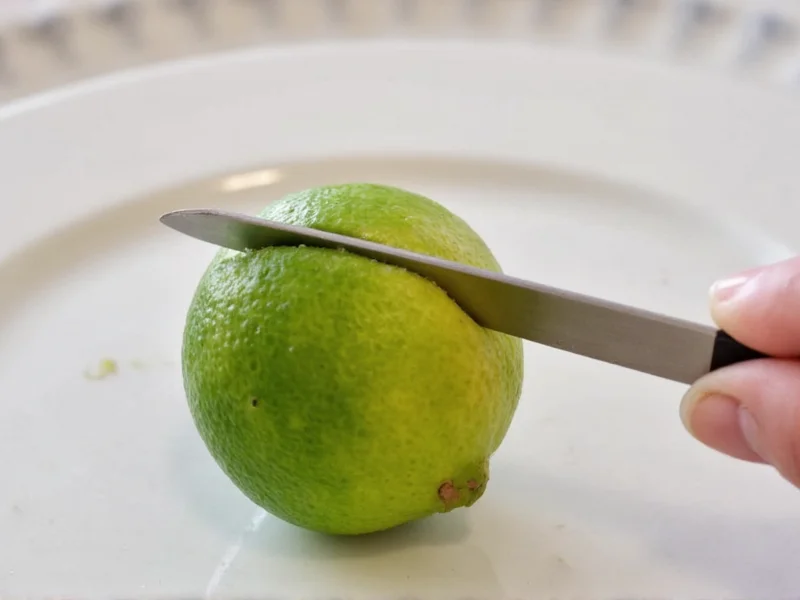What Exactly Is Lime Zest and Why It Matters
Lime zest refers to the thin, colored outer layer of the lime peel that contains essential oils packed with intense citrus flavor. Unlike lime juice, which provides acidity, zest delivers aromatic compounds that enhance dishes without adding liquid. Professional chefs consider fresh zest superior to bottled alternatives because it contains volatile oils that evaporate quickly, making freshly grated zest significantly more flavorful.
Essential Tools for Zesting Limes
While several kitchen tools work for zesting, each offers different results:
| Tool | Best For | Texture Result | Efficiency Rating |
|---|---|---|---|
| Microplane grater | Most applications | Fine, fluffy zest | ★★★★★ |
| Rasp-style zester | Precise control | Thin ribbons | ★★★★☆ |
| Vegetable peeler | Cocktail garnishes | Wide strips | ★★★☆☆ |
| Fine cheese grater | Emergency situations | Coarse particles | ★★☆☆☆ |
Step-by-Step Guide to Perfect Lime Zest
Follow these professional techniques to maximize flavor while avoiding bitterness:
- Prepare the lime: Wash thoroughly with warm water and scrub gently with a vegetable brush to remove any wax or pesticides. Pat completely dry.
- Roll for maximum oil release: Place the lime on your counter and roll firmly with your palm to break down internal membranes and release more oils.
- Choose your tool position: Hold your microplane or zester at a 45-degree angle above your collection surface.
- Grate with control: Using firm but gentle downward pressure, drag the lime across the tool. Rotate the lime as you work to maintain even pressure.
- Monitor depth carefully: Stop immediately when you see white pith appearing - this indicates you've gone too deep and bitterness will follow.
- Collect efficiently: Use a small bowl or directly over your recipe to capture every flavorful particle.
How Much Zest Can You Expect From One Lime?
The amount of zest varies by lime size and your technique:
- Medium lime (2-3 inches): Yields approximately 1-1.5 teaspoons of zest
- Large lime (3+ inches): Provides up to 2 teaspoons of zest
- Bottled lime zest substitute: Use 1/4 teaspoon per teaspoon of fresh zest (with noticeable flavor difference)
For recipe accuracy, always zest before juicing - the rolling action releases more juice and improves yield.
Proper Storage Techniques for Fresh Lime Zest
Fresh lime zest maintains peak flavor for just 1-2 hours at room temperature. For longer storage:
- Refrigeration method: Place zest in an airtight container with a paper towel to absorb moisture. Keeps for 2-3 days.
- Freezing technique: Spread zest on parchment paper, freeze solid, then transfer to a freezer bag. Lasts 6 months.
- Oil preservation: Mix zest with equal parts neutral oil and store in refrigerator for up to 2 weeks.
Never store zest in water - this dilutes the essential oils and diminishes flavor.
Common Zesting Mistakes and How to Avoid Them
Even experienced cooks make these critical errors when learning how to zest a lime:
- Removing too much pith: The white layer beneath the zest contains bitter compounds. Solution: Use light pressure and rotate the lime frequently.
- Using dull tools: Dull graters crush rather than cut the peel, releasing bitter oils. Solution: Replace microplanes when they become dull.
- Zesting unripe limes: Underripe limes have less oil and more bitterness. Solution: Choose limes with deep green color and slight give when squeezed.
- Washing immediately before zesting: Wet limes make zest clump. Solution: Wash limes several hours before use and ensure they're completely dry.
Creative Culinary Applications for Lime Zest
Beyond basic recipes, professional chefs use lime zest in innovative ways:
- Cocktail enhancement: Add directly to margaritas or muddle with simple syrup for intense citrus aroma without excess liquid
- Infused salts and sugars: Combine equal parts zest and salt/sugar, then dry in a low oven for flavored finishing products
- Compound butters: Blend zest with softened butter and herbs for instant flavor boosts
- Pastry applications: Incorporate into pie crusts, cake batters, or frosting for bright citrus notes
- Savory dishes: Sprinkle over fish, chicken, or vegetable dishes just before serving for fresh flavor
How to Zest a Lime Without Specialized Tools
When you don't have a zester available, try these alternative methods:
- The fork method: Press a fork firmly against the lime peel while rotating the fruit. The tines will scrape off fine zest particles.
- Vegetable peeler technique: Remove wide strips of peel, then mince extremely fine with a sharp knife. Be meticulous about removing all white pith.
- Grater alternative: Use the smallest holes on a standard cheese grater, but work quickly to avoid bitterness from excess pressure.
Remember that improvised methods typically yield less zest with more risk of bitterness, so use extra limes when possible.











 浙公网安备
33010002000092号
浙公网安备
33010002000092号 浙B2-20120091-4
浙B2-20120091-4